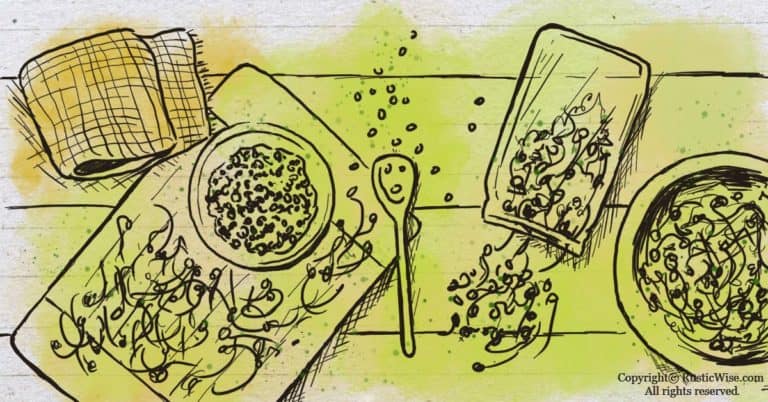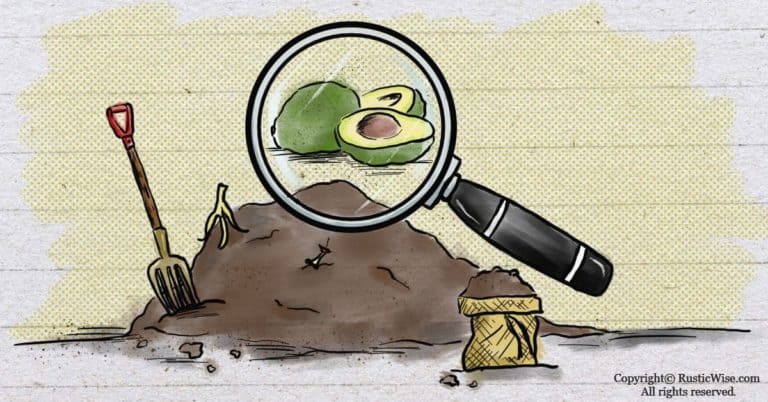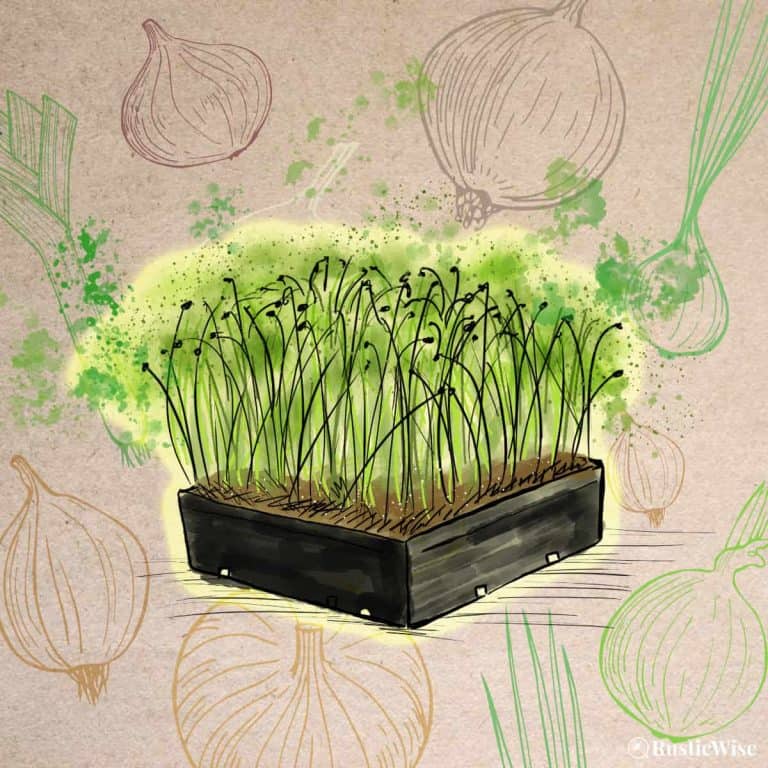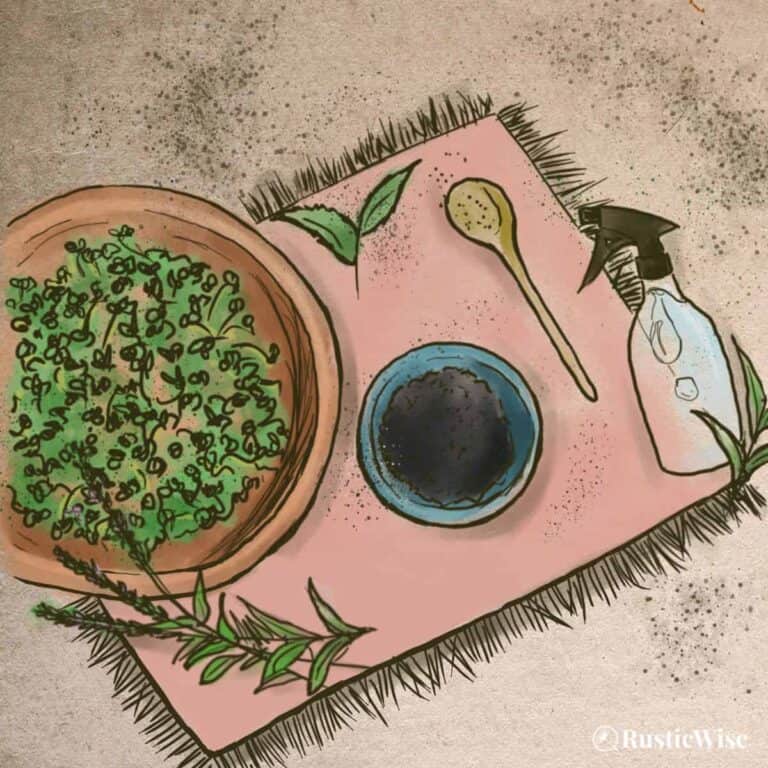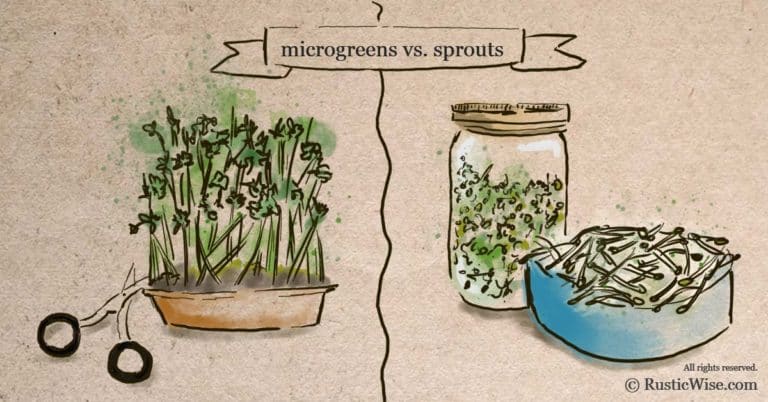A Roundup of 10 Best Microgreens for Smoothies
In today’s busy world, there are many reasons for making a green smoothie a part of your daily routine. It’s easy, it’s fast, and it’s healthy. And, if you want to bump up the nutrient content in your green juice, there’s a great way to do that: add a handful of microgreens.
Harvested when only a couple of inches tall, these tiny greens are brimming with vitamins, minerals, and polyphenols (a rich source of natural antioxidants). Here are 10 best microgreens for smoothies: beet, borage, broccoli, carrot, clover, flax, kale, pea, and sunflower microgreens, plus wheatgrass.
We’ll go over flavor profiles and how much to add to create an easy microgreen smoothie that will start your day with some pep in your step. Let’s get started!
What are microgreens, exactly?
Microgreens are the tiniest seedlings of a vegetable or herb plant. Smaller and younger than “baby” leafy greens such as baby kale or spinach, micros are harvested when only 1 to 3 inches tall (3 to 8 centimeters).
At this young stage of growth, these small greens have their seed leaves (aka cotyledons) intact. These are the first leaves of a plant which are packed with essential vitamins and minerals. They are also rich in antioxidants.
Not to be confused with sprouts (which are germinated seeds that we eat whole: root, shoot, and seed), microgreens are harvested at the soil line.
The wonderful thing about micros is you can grow them indoors all year round. They require little space (which is perfect for urban gardeners!).
Microgreens are great for garnishing your food. They not only add flavor but also a visual punch. Use them as part of a salad, sandwich, or as a side dish. They’re also a perfect way to mix up your morning smoothie!
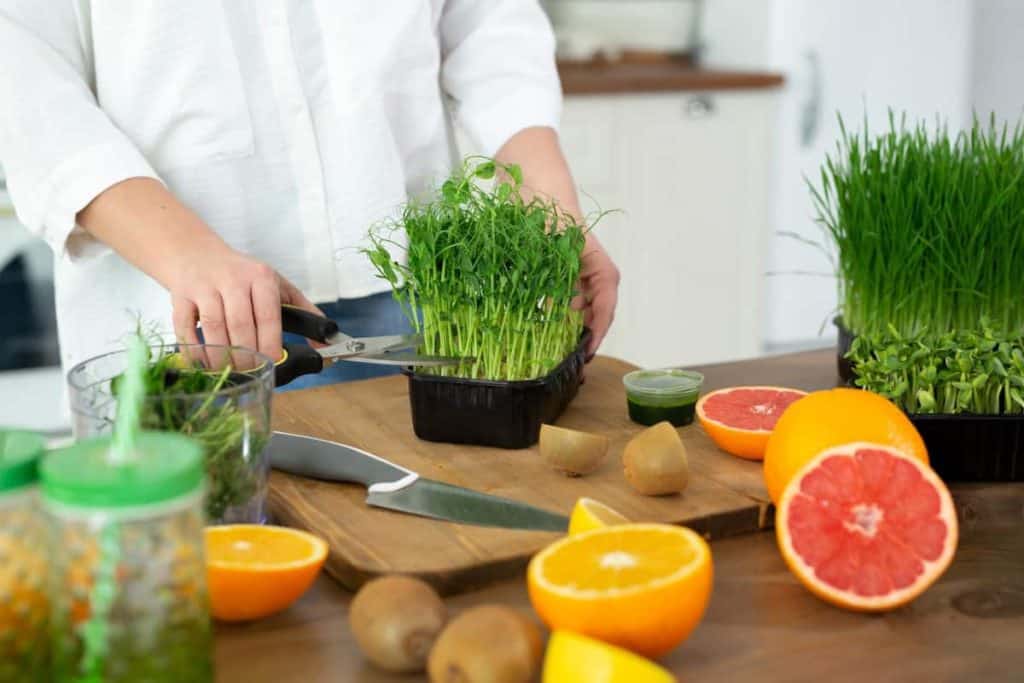
What do microgreens taste like?
If you’re interested in adding microgreens to your diet, you may wonder how microgreens taste. With so many varieties of microgreens to choose from, there is a flavor profile to suit everyone’s personal tastes.
Their taste depends on the variety of microgreen. Some have a nutty taste, such as sunflower shoots, while others are peppery and spicy, like radish microgreens or mustard greens. Others are sweet and fresh like the pea microgreen.
With their unique taste and high concentration of nutrients, you really can’t go wrong. They’re a great way to drink your greens!
Why add microgreens to your smoothie?
Smoothies are an easy way to get a lot of vitamins and nutrients on-the-go.
A 2012 study by the University of Maryland together with the USDA’s Agricultural Research Service examined 25 varieties of commercially grown micros. They found microgreens can contain between 4 and 40 times more vitamins and carotenoids (vitamin A) than the mature leaves from the same plants. On average, most micros contain 5 times more vitamins and carotenoids.¹
Micros have potent antioxidant content found in their high polyphenol content. Antioxidants can help with the prevention of cellular aging and are great for warding off those cold and flu viruses that circulate during the winter.
These health benefits make them a perfect food for you and your family.
How much microgreens to add to a smoothie?
To add microgreens to your smoothie, just add about ¼ cup of microgreens per serving to your smoothie maker with your fruits and veggies and blend it up! This is roughly a large handful. Remember, a little goes a long way.
Consuming just a handful of these healthy greens may provide you with more nutrients than eating larger amounts of fully grown leafy greens or veggies. This is good news for those who don’t exactly enjoy eating a big bowl of salad, for example.
A roundup of the 10 best microgreens for smoothies
One of the most common smoothie ingredients is kale, but what other options are out there? We’ll look at 10 of the best microgreens for smoothies, and how you can use them to create a tasty, nutritious juice that’s perfect for you.
I’ve included a few perennial favorites like peas and sunnies, along with a few overlooked varieties.
For smoothies or juices, we’ve selected micros that have either a mild and versatile flavor, ranging from nutty to sweet. I’ve avoided those that are strong and spicy (sorry, mustard greens), because we just don’t think that would be most people’s cup of tea.
The following are listed in alphabetical order.
1. Beet microgreens
Want to add a splash of color to your smoothie or juice? Look no further than red beet microgreens with its pinkish-red stems and green leaves.
Beet micros are a nutritional powerhouse with plenty of vitamins A and K, and vital essential amino acids. Not only do they help with digestion, they also promote healthy glowing skin.
Bull’s blood beet micros are a popular variety to grow. They have a mild and earthy flavor with just a hint of spinach. You’ll need to practice patience growing this type of micro, however. It’s a slower growing variety that’s ready to harvest in 11-21 days.
2. Borage microgreens
Here’s an often overlooked micro that has a pleasant flavor like a cross between cucumber and melon. If you’re not familiar, borage is an annual herb that produces purplish-blue flowers.
With wide, thick leaves and micro hairs, borage microgreens produce foliage that’s juicy and plump.
This herb is packed with vitamins A and C, along with iron and manganese.²
Ready to harvest in 10 to 15 days.
3. Broccoli microgreens
One of the most nutrient-dense Brassicas is broccoli. Broccoli microgreens contain high levels of glucoraphanin, a compound that converts to sulforaphane, a powerful cancer-fighting compound that is released when blended or juiced.³
Besides sulforaphane, this Brassica is also a good source of vitamins A, C, K, and B6. It’s also contains high levels of calcium, dietary fiber, iron, manganese, and protein.
While broccoli micros have a slightly spicy broccoli flavor, you can easily temper it with sweet fruits like strawberries, bananas, or pineapple. A splash of lemon juice also goes a long way in brightening this flavor.
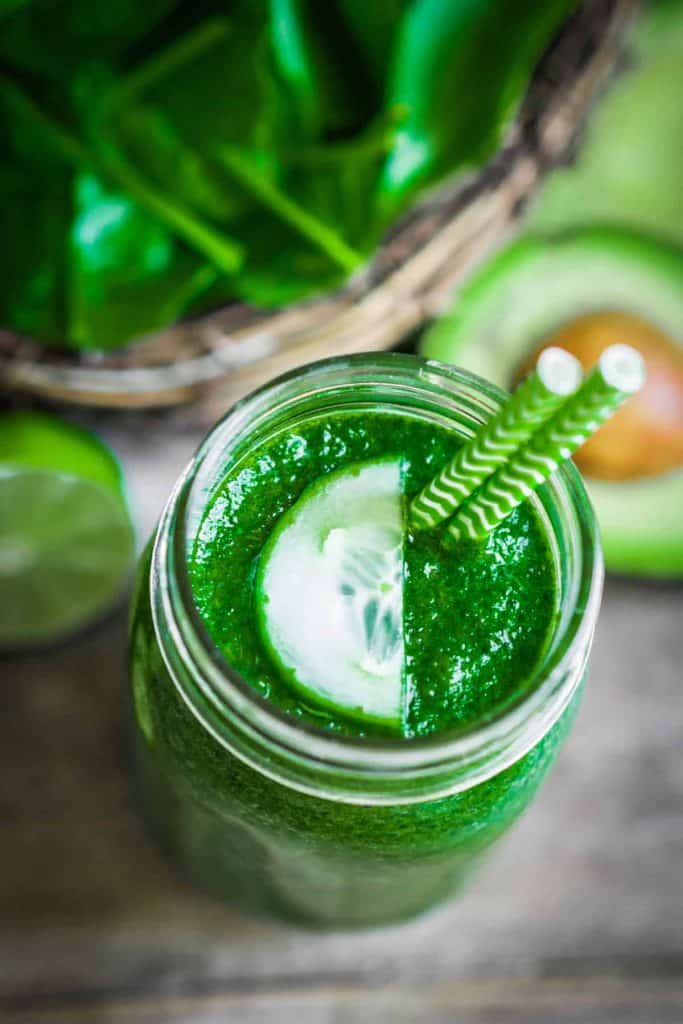
4. Carrot microgreens
Who doesn’t like the taste of fresh carrots? The microgreen version of this popular root vegetable has a mild carrot flavor that goes well with virtually all smoothie ingredients.
Carrot microgreens have delicate leaves and are an excellent source of vitamin A. It also contains vitamins B6, C, folate, iron, potassium, copper, manganese and is a great source of dietary fiber.²
Carrot micros are unfortunately a slower growing micro that can take up to 25 days before it’s ready to harvest.
5. Clover microgreens
Clover micros have a mild and refreshing flavor with a hint of tartness to keep things interesting. They are easy to grow and are ready to harvest in less than 2 weeks.
Clover is packed with isoflavones, plant-based estrogen-like compounds. It’s also a wonderful source of vitamins C and K, dietary fiber, calcium, phosphorus, potassium, and thiamine. Red clover offers a complete source of plant-based protein.
You can also use these microgreen seeds to grow clover sprouts.
6. Flax microgreens
A tall growing variety of micro, flax microgreens have a mild, slightly nutty flavor that pairs well with most smoothie ingredients.
We commonly sprinkle flaxseeds onto cereals or smoothies, so using flax micros as a microgreen smoothie ingredient makes sense, nutritionally and taste-wise.
Did you know flaxseeds are one of the richest plant-based sources of lignans? Lignans are a type of phytoestrogen. Flax microgreens are packed with healthy omega-3s, protein, and dietary fiber.
7. Kale microgreens
The same seeds can grow kale sprouts or kale microgreens. There are many types of kale seeds to choose from, including green, purple, and red varieties.
Making a smoothie with kale as an ingredient is a no-brainer—it’s one of the healthiest leafy greens.
Packed with plant-based protein, vitamins A, C, K, and B6. Contains ample amounts of calcium, potassium, copper, manganese, and dietary fiber.²
With a mild taste, and a slightly nutty and sweet flavor profile, this quick growing micro is ready to eat in under 2 weeks.

Credit: Yay Images
8. Pea shoots
Fresh and crunchy, if you enjoy the taste of garden peas, you’ll love the taste of sweet pea shoots. The agreeable flavor of peas makes this a shoo-in ingredient to add to a tasty smoothie.
In pea microgreens you’ll find ample amounts of vitamin C, along with vitamin A, E, and B-vitamins. Peas are also a great source of protein, fiber, and omega-3s.²
You’ll need to presoak and presprout these peas seeds before sowing them. These fast-growing micros are ready to harvest in 10–14 days. They grow larger than most types of microgreens, and you can get more than one harvest if you’re lucky.
9. Sunflower shoots
Microgreens, like sunflower, can be used in smoothies to provide a crunchy, nutty taste. You can add them to anything from water to yogurt and your taste buds will be happy! Similar to pea shoots, sunflower microgreens grow tall and large.
Sunflower offers a rich source of vitamins K, A, C, B6. It also contains folates, iron, and protein. A handful of these greens provide omega-3s and omega-6s for brain health. Sunnies also contain a complete source of amino acids.²
Black oil sunflower seeds are the most common choice for growing micros. You’ll need to soak and pre-sprout them before sowing.
10. Wheatgrass
This fresh, potent plant is the first green I think of when I hear the word smoothie or juice. The strong grass-like flavor of this green makes juicing or blending it one of the best ways to enjoy it!
Chock full of amino acids, calcium, chlorophyll, iron, protein, and an assortment of vitamins—starting your day with a wheatgrass smoothie will power you through the day!
Here’s a microgreen to use in moderation
While there are many wonderful health benefits of buckwheat microgreens, it’s one variety you’ll want to use in moderation. Buckwheat greens contain fagopyrin, a compound that causes light sensitivity (or phototoxicity) when consumed in large amounts.
Some people have reported having itchy, tingly, or a burning sensation in the skin because of juicing large quantities of this micro.
Tip: Since it’s easy to over-do it when juicing or making smoothies, we suggest you stick with eating buckwheat micros in salads or sandwiches instead.
What greens and fruits to add to smoothies?
Greens and fruits go very well together in smoothies, despite having different textures and flavors.
Round out your smoothie recipe with other full-grown vegetables and fruits.
Vegetables:
- Leafy vegetables such as baby spinach and kale.
- Carrots
- Celery
- Cucumber
Fresh or frozen fruits:
- Apple
- Avocado
- Berry mixes
- Banana
- Kiwi
- Orange
- Pineapple
- Strawberries
Liquids:
- Coconut water
- Filtered water
- A splash of lemon juice
- Milk (dairy or milk alternatives like almond or oat milk)
- Yogurt
Seeds:
- Chia seeds
- Flaxseeds
- Hemp hearts
👉Looking for microgreen smoothie recipes? Check out our roundup of 11 Healthy and Delicious Microgreen Smoothie Recipes.
Can you freeze microgreens?
Yes, you can freeze microgreens. But you should know that the texture, flavor, and sometimes color will be altered after freezing. It’s best to enjoy these miniature greens fresh. Or, you can also dehydrate them. If you choose to freeze micros, don’ bother defrosting them. Instead, grab a handful and add them to your smoothie!
👉 If you like this post, see our Complete Guide to Growing Microgreens at Home. 🌱
Would you like more timeless tips via email?
Fun tips to help you live an independent, self-sustaining lifestyle. Opt-out at any time.


References
- Lester, Gene & Xiao, Zhenlei & Luo, Yaguang & Wang, Qin. (2013). Microgreens: Assessment of Nutrient Concentrations. Journal of Agricultural and Food Chemistry. https://dx.doi.org/10.1021/jf300459b
- Nutrition Data, Various vegetables, https://nutritiondata.self.com/. Accessed November 2022.
- Kim, J. K., & Park, S. U. (2016). Current potential health benefits of sulforaphane. EXCLI journal, 15, 571–577. https://doi.org/10.17179/excli2016-485

Author: Theresa Tesolin
Theresa is co-founder of RusticWise. She helps people unleash their inner DIY spirit by encouraging them to get dirty and make or grow something from scratch.


